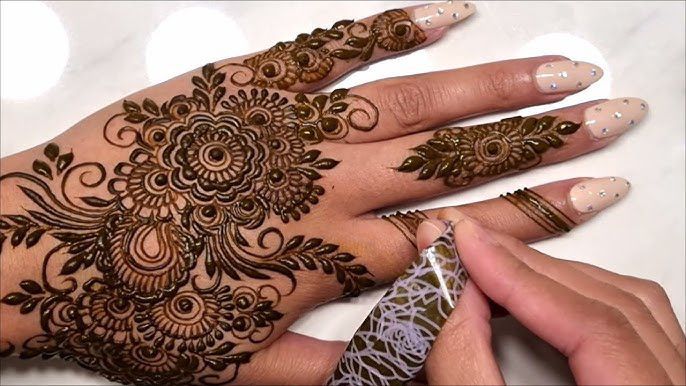
Among the many cherished traditions that mark Eid al-Fitr, the art of applying henna holds a place of deep cultural and spiritual significance.
For generations, women have decorated their hands and feet with intricate henna patterns, symbolising beauty, blessings, and new beginnings. But where did this tradition originate?
ALSO READ: 10 best nail colours for light-skinned girlies
The Origins of Henna
Henna, derived from the Lawsonia inermis plant, has been used for centuries across South Asia, the Middle East, and North Africa. Its origins can be traced back to ancient Egypt and India, where it was applied for medicinal, cooling, and decorative purposes.
Its use dates back over 5,000 years, with historical evidence found in ancient Egyptian mummies, where it was used for body art and hair dye. The art of applying henna, often called Mehendi, has been a significant cultural practice in regions stretching from India to Morocco.
Ancient Egyptians used henna not only for beautification but also for its cooling properties in the desert heat. In the Indian subcontinent, henna became an essential part of wedding rituals, symbolising joy, prosperity, and love. Islamic cultures embraced henna as a form of celebration, and it became closely associated with religious festivals like Eid.
The tradition of applying henna before Eid, especially on Chand Raat (the night before Eid), has been passed down through generations. Women and girls gather to adorn their hands with beautiful motifs, marking the end of Ramadan with a sense of joy, renewal, and communal bonding.
Over time, henna became an integral part of religious and festive celebrations, including weddings, childbirth, and, most notably, Eid al-Fitr and Eid al-Adha.
ALSO READ: The significance of Henna in Northern Nigerian weddings
Why Henna is Used During Eid
Eid is a time of renewal, reflection, and gratitude, and henna beautifully embodies these sentiments. It is believed to bring good luck, happiness, and prosperity, making it a beloved part of the pre-Eid preparations.
Women and young girls gather on Chand Raat (the night before Eid) to apply henna and this practice fosters a sense of togetherness, as friends and family share in the excitement of decorating their hands with unique designs.
The Spiritual and Cultural Significance of Henna
Beyond its aesthetic appeal, henna holds deep spiritual and symbolic meanings:
Renewal & Rebirth: Henna marks the start of a new chapter, much like Eid signifies the completion of Ramadan and the beginning of fresh blessings.
Protection & Positivity: Many believe that henna wards off negativity and attracts good fortune.
Joy & Celebration: The process of applying henna is a communal activity, bringing women together in laughter and festivity.
ALSO READ: 10 nail colours that look stunning on dark skin
Henna designs vary across cultures, each carrying distinct artistic expressions, but here are the most popular designs.
Arabic Henna – Bold floral patterns with minimal shading for a delicate yet striking look.
Indian Mehendi – Dense, intricate motifs covering the entire hand, featuring paisleys, peacocks, and mandalas.
Pakistani Designs – A fusion of Arabic and Indian styles, incorporating both bold strokes and fine detailing.
Modern & Minimalist Styles – Simple, elegant patterns that suit contemporary fashion trends.
How to Make Your Henna Last Longer
To keep your henna stain vibrant throughout the Eid celebrations, try these expert tips:
Let it dry naturally – Avoid blow dryers or washing hands too soon.
Apply lemon & sugar mix – Helps deepen and set the colour.
Use clove steam – Enhances the richness of the stain.
Moisturise with natural oils – Prevents fading and prolongs the design’s life.
Can Non-Muslims Wear Henna?
Yes, non-Muslims can wear henna. Henna is not exclusive to any one religion or culture. While it holds deep significance in Islamic traditions, particularly during Eid and weddings, it has also been used for centuries by various cultures across North Africa, the Middle East, South Asia, and even parts of Europe.
Henna has been historically embraced by many communities as body art. Today, henna is popular worldwide, with people of all backgrounds using it for artistic expression, fashion, and celebration. As long as it is worn respectfully and with an appreciation for its cultural significance, henna can be enjoyed by anyone.
ALSO READ: Eid Mubarak Wishes: 100 heartfelt messages to celebrate the joy of Eid